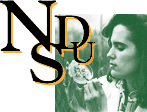 |
|
|
|
Identification key to the Noctuinae occurring in the Dakotas The subfamily Noctuinae is distinguished from other subfamilies of the Noctuidae by the following combination of characters: hindwing venation trifid rather than quadrifid (1), eyes almost always without hair (2), eyes without lashes anterior to antennae (3), fore and hind tibiae usually, and mid tibiae always with spine-like setae (4).
Members of three additional subfamilies,
share some of these characters. Many Cucullinae sensu lato
and Hadeninae: Xylenini, have setose tibiae. In these groups the setae are
usually widely and somewhat irregularly spaced rather than more evenly spaced within rows
as in the Noctuinae. Most of the species with setose tibiae also possess eye
hair or lashes. A few arctic or high altitude noctuines may possess these
eye characters as well. Identification is not classification and characters from
all life history stages as well as DNA evidence is used in classification.
|
|
Last updated:
02/06/07
|